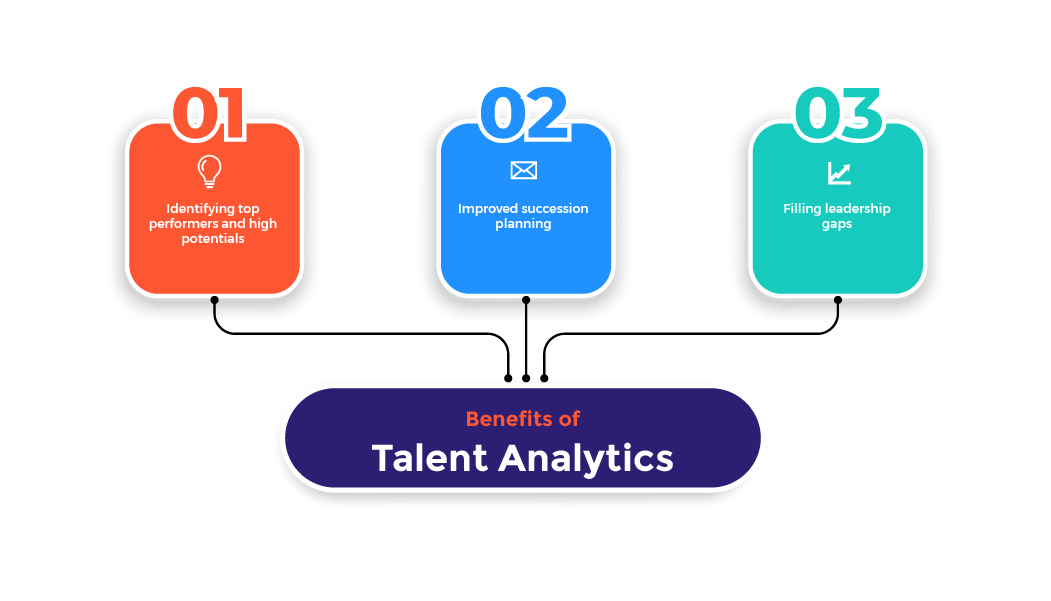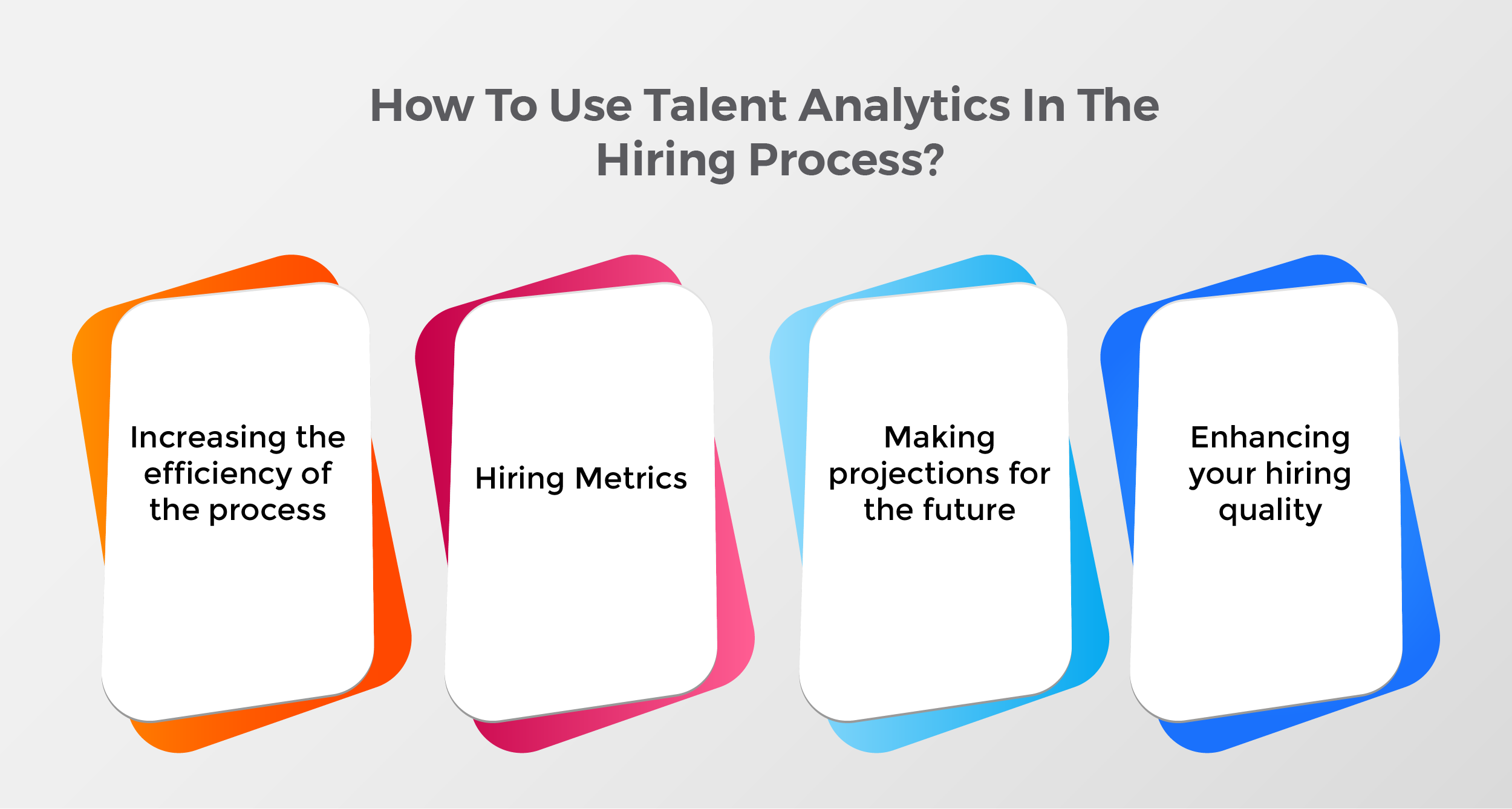
Although tomorrow is always unknowable, humanity has never faced greater unpredictability in modern years as they do today. Consequently, leading sectors, corporations, and organizations are becoming more challenging.
It is necessary to use a data-driven strategy and guarantee that each step leads to a well-thought-out conclusion and a beneficial end. This poses a difficult task for human resources, an ever-evolving profession in charge of human capital, a vital component of every firm.
The dilemma is, how could one adopt a scientifically sound and well-informed judgment when the evolution of human assets has never felt so gloomy?

Talent analytics is the most dependable solution that addresses all of the issues.
Business executives that use this analysis may design appropriate plans and successfully manage their firms regardless of external events. They would have pertinent information on employee statistics, the recruitment stream, teamwork shortcomings, and other vital information.
Talent Analytics
Talent analytics, in essence, is the implementation of practical data approaches to human resources, utilizing data from previous, present, and future workers to provide knowledge. Businesses may soon understand top employee attributes and use this crucial data to hire the exact appropriate employees with this knowledge.
Moreover, the capacity to recruit the right people
has become one of the most critical differentiators in today’s corporate environment. Responsively, there is a growing market for applications and systems that may assist businesses in assessing their cultures and finding individuals who perfectly fit inside their plans, beliefs, and organizations and fit within the available roles themselves.
Further, HR managers today have realized that hiring the most exemplary individuals is speedier and more cost-effective, and unbiased when they have access to the correct data. Indeed, analytics technology is causing a shift that progressively transforms HR’s job altogether, making it more vital to company goals and strategies than ever before.
Talent analytics solutions may provide managers with insights on who to recruit while controlling costs, enhancing operational efficiencies, and broadening the field of candidates. It may also assist businesses in better analyzing attrition, doing more comprehensive long-term planning, staying on top of qualifications and development, and identifying and engaging top talent.
How To Use Talent Analytics In The Hiring Process?

Increasing the efficiency of the process
Talent analytics may assist you in identifying a plethora of chances for improving your hiring process. You can quickly uncover recruiting constraints by evaluating a candidate and staff data, making the recruitment operations more effective. This will simplify procedures and allow you to work more effectively. Still, it will also reduce hiring expenses and offer you more leeway in your recruitment budget to experiment with new things.
Hiring Metrics
One of the most critical analytics applications in recruiting is tracking hiring statistics. Regularly, the recruiting teams use analytics to assess crucial indicators such as cost per hire, sourcing time/frequency, pass-through rates, time-to-fill, and so on. In a larger sense, talent analytics optimizes the hiring process and assists in deploying resources to positions that demand rapid action.
Monitoring metrics is critical for understanding how effective the organization is at recruiting and hiring employees. It contributes to the firm’s business plan. It provides management with insights into how successful the recruiting teams are and how they contribute to achieving corporate goals and objectives.
Making projections for the future
Being a recruiter entails preparing ahead of time and anticipating talent and skill shortfalls. Predictive analytics are incredibly beneficial for planning for the future and producing accurate predictions about your expected recruitment budget, time to hire, recruitment costs, recruitment regularity, and other relevant factors.
Enhancing your hiring quality
You may find the best prospects, examine what your best recruits have in common, and repeat the process by utilizing analytics to make data-driven recruiting choices. This will allow you to better match candidates to vacant opportunities, increase your overall recruiting quality, and minimize churn.
Final Thoughts:
Talent analytics is more than just data collection; it strives to give insights into each process by obtaining relevant data and then utilizing it to judge how to enhance the processes. Talent analytics solutions are being utilized by recruiting agencies and fast-growing organizations that need to acquire new staff to continue growth.
Businesses that use these technologies consequently spend less time on non-productive tasks, while relationship marketing, staff engagement, and profitability have all benefited. On the other hand, conventional means of selecting applicants are becoming obsolete. Firms are gradually shifting toward Big-data, Artificial Intelligence, and Analytics, which will support them in nominating and employing better individuals with fewer resources and costs.
Besides, companies must first assess the impact of talent analytics tools on their company before implementing the product. They must also stay up with the latest trends in talent analytics since technology is constantly evolving, and using obsolete technologies will never yield the intended outcomes. They can detect attrition concerns and take preventative steps.
Also, companies must evaluate other critical variables in addition to technical aspects. Talent analytics understands the demands of HR teams and recruiting managers, and the platform can be tailored to the company’s specifications. Customer service must also be a significant priority; having an excellent product but providing poor customer service will never benefit the company. Talent analytics solutions in the market deliver high-quality assistance and attempt to serve their clients with the most exemplary in-class customer service.
Nevertheless, in today’s employment market, organizations are constantly confronted with new obstacles, necessitating real-time data to manage concerns and plan for future challenges. Companies can construct in-house analytics tools to obtain real-time data; however, this is a time-consuming and expensive process. Companies may also collaborate with talent analytics organizations, which provide the most up-to-date talent analytics solutions at an accessible price, employ innovative technology, protect applicant data, and adhere to all regulatory requirements.
Frequently Asked Questions
What are the top three talent analytics factors?
Nothing could be more crucial than showing your hiring process’s (monetary) effect. Reliability, efficiency, and costs – or are the three most significant variables that genuinely matter to any organization and have the most significant influence.
How is HR analytics performed?
HR analytics, also known as workforce planning, human resource information system, or talent analytics, includes collecting, analyzing, and reporting on HR data. It helps your firm assess various HR KPIs’ influence on overall business performance and make data-driven choices.
What are the HR analytics challenges?
Integrating information from various sources, a lack of data analytical skills within HR, inadequate IT Resources for HR business intelligence, confidentiality, and compliance concerns, and taking the People out of Human resource management are why HR struggles with HR data analytics.
For more Updates
Website – www.shrofile.com
Facebook page – https://www.facebook.com/shrofile/
Twitter page – https://twitter.com/shrofile
Linkedin Page – https://www.linkedin.com/company/shrofile/
YouTube Page – https://www.youtube.com/channel/UChVfJqpTjx1dHJ2xq_dMtAw
Instagram Page – https://www.instagram.com/Shrofile/



